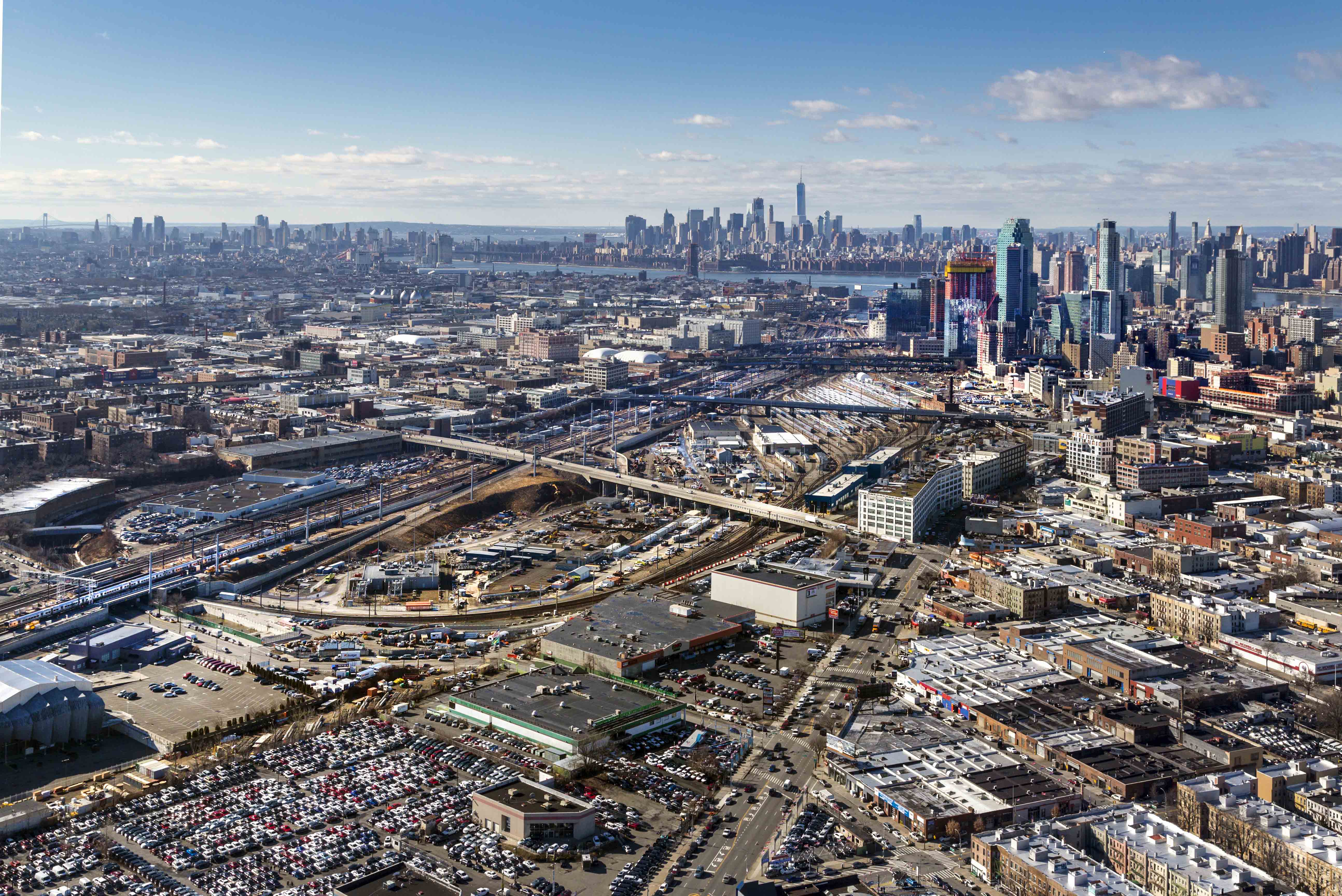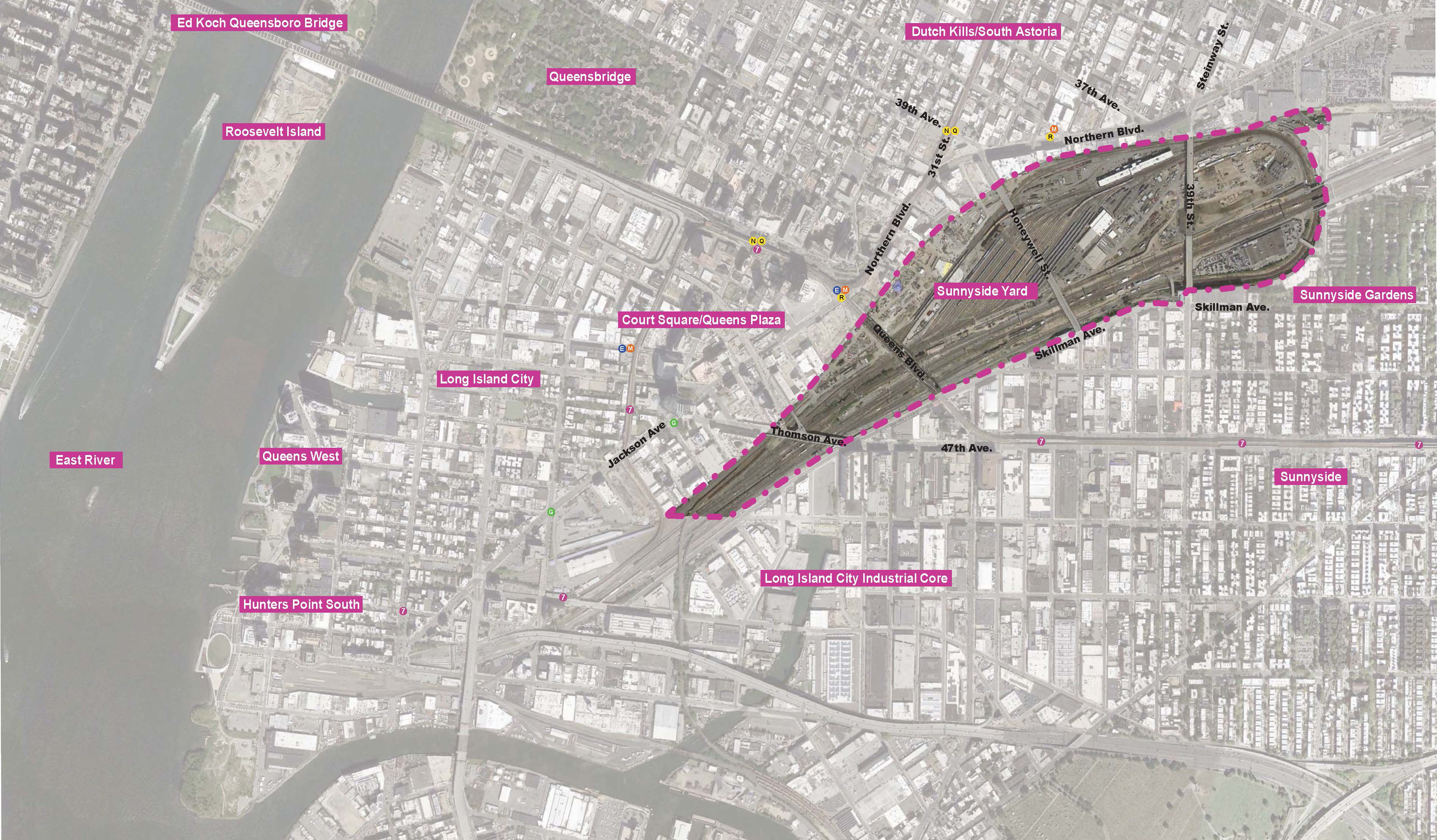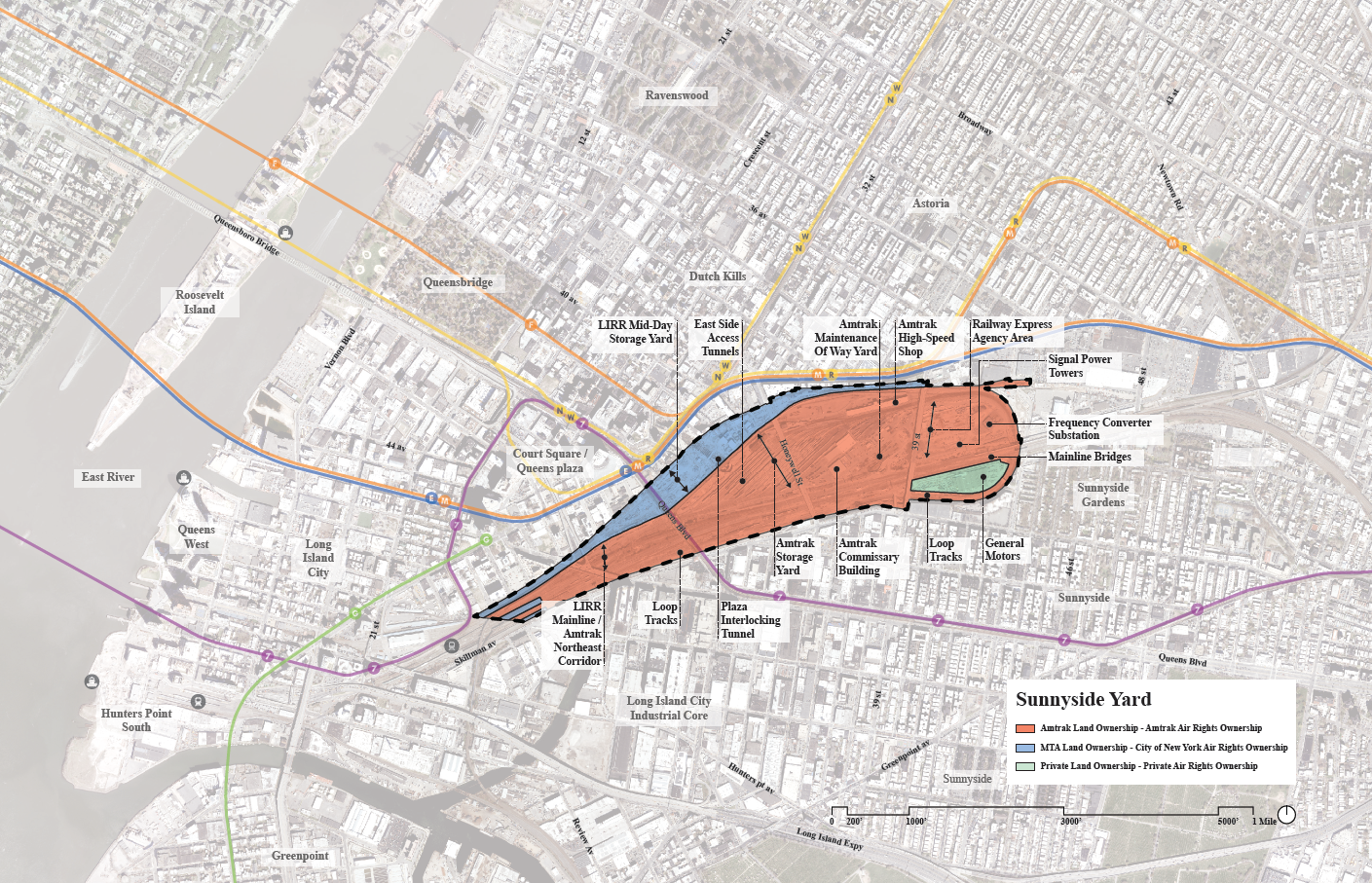Is a Rail Yard in Queens the Site of New York’s Next Mega-Development?, the New York Times asked, in an article published in print today:
Locals, however, are more dubious:
A contrast with Atlantic Yards
Either way, it's notable that this huge railyard--21 times the size of the Metropolitan Transportation Authority's Vanderbilt Yard--is the subject of a planning process, not what was essentially a sole-source development, as with Atlantic Yards.
One belated bid for that railyard was put aside by the MTA even though the cash component was greater. (In the case of Sunnyside Yard, Amtrak owns most of the land.) One lesson from the Vanderbilt Yard/Atlantic Yards is that cost estimates may not be accurate.
The article notes past efforts in 1971, 2006, and 2012.
The NYC EDC pages
Here's the overview from the New York City Economic Development Corporation (NYC EDC):
What could be there?
The basics
A NYC EDC blog post, On the Sunnyside Yard, Part 1: What is Sunnyside Yard?, published 8/10/18, adds more on the history:
[Deputy Mayor Alicia] Glen, along with Amtrak and a team of architects and city planners, is leading the charge for Sunnyside Yard — a 180-acre potential development site in western Queens. Not far from the geographical center of the city, the massive site is surrounded by Long Island City, Astoria, Dutch Kills, Queens Plaza and Sunnyside itself, with Greenpoint on the periphery.
With a feasibility study already completed and a steering committee formed, the city will hold meetings starting in the fall to develop a master plan for building a deck on top of the yard and placing a small city — on the scale of Battery Park City — on top of it. The idea is not unlike the deck built over the rail yards on Manhattan’s West Side on which the Hudson Yards development now stands.
 |
| The Sunnyside Yard from above, looking southwest. All graphics via NYC Economic Development Corporation |
The community’s concerns, [steering committee member Melissa Orlando] said, include housing prices rising in the area, longtime residents being displaced, already overcrowded 7 and E subway trains, an overtaxed utility grid and overflow of sewage into Newtown Creek, the nearby Superfund site.Also see skepticism from the blogger behind LICtalk. Theoretically, a new development might ameliorate the cost of housing and tamp down displacement, if done right, and if coupled with infrastructure improvements. That's the big if.
A contrast with Atlantic Yards
Either way, it's notable that this huge railyard--21 times the size of the Metropolitan Transportation Authority's Vanderbilt Yard--is the subject of a planning process, not what was essentially a sole-source development, as with Atlantic Yards.
One belated bid for that railyard was put aside by the MTA even though the cash component was greater. (In the case of Sunnyside Yard, Amtrak owns most of the land.) One lesson from the Vanderbilt Yard/Atlantic Yards is that cost estimates may not be accurate.
The article notes past efforts in 1971, 2006, and 2012.
The NYC EDC pages
Here's the overview from the New York City Economic Development Corporation (NYC EDC):
On May 3, 2018, the City of New York and Amtrak announced the Sunnyside Yard master planning process will begin in summer 2018 with a newly formed steering committee that includes community leaders, regional thought leaders, and planning experts.
Practice for Architecture and Urbanism (PAU) has been selected to lead a multidisciplinary consultant team to conduct the technical analysis and develop the plan in coordination with the members of the Sunnyside Yard Steering Committee and the broader community.
What could be there?
That growth will put additional strain on schools, parks, mass transit, and housing that current residents rely upon. Sunnyside Yard presents an opportunity to address these challenges head-on in a way that integrates new development into the established fabric of surrounding communities.The page notes that a 2017 Feasibility Study (Executive Summary) "found that decking and construction is feasible in the majority of the yard, with approximately 15 to 20 percent infeasible, predominantly over the highly trafficked Main Line. The study tested several hypothetical scenarios and identified certain sections of the yard that are ideal for different types of buildings and others for a range of parks, roads, and open spaces."
Through the drafting of a Master Plan, the City and Amtrak will work with local and regional stakeholders to develop a vision and framework to guide investments and address the needs of the adjacent growing neighborhoods, borough, city, and region.
The basics
A NYC EDC blog post, On the Sunnyside Yard, Part 1: What is Sunnyside Yard?, published 8/10/18, adds more on the history:
Sunnyside Yard was opened in 1910 by the Pennsylvania Railroad and, at the time, it was the largest coach rail yard in the world. Today, the yard is owned jointly by Amtrak (142 acres), the MTA (31 acres), and General Motors (7 acres). (Note: we’ll take a deeper dive into the yard’s history in the coming months.)What happens there:
Sunnyside Yard is crucial to rail operations in the Northeast Corridor and, by extension, the entire United States. As a rail yard, it is a key train storage yard and maintenance hub, with 32 active storage tracks used daily by Amtrak and NJ Transit for trains leaving from or arriving at Penn Station. The yard is also one of the busiest railroad junctions in the US, with 132 Amtrak trains, 100 NJ Transit trains, and 578 LIRR trains passing through daily, projected to increase to about 1000 trains per day by 2023.What's nearby:
Sunnyside Yard itself is the place of work for approximately 800 Amtrak employees, and this is expected to jump to 1,300 by 2030. Further, the area surrounding the yard (within a 1-mile radius) is home to 100,000 residents and 90,000 jobs and includes a diverse set of neighborhoods that range from a major employment hub to long-time manufacturing districts to historic residential communities. Additionally, the area is served by eight subway lines and 13 stations—along with LIRR—offering residents and workers easy access to Midtown Manhattan and other parts of the city.


Comments
Post a Comment